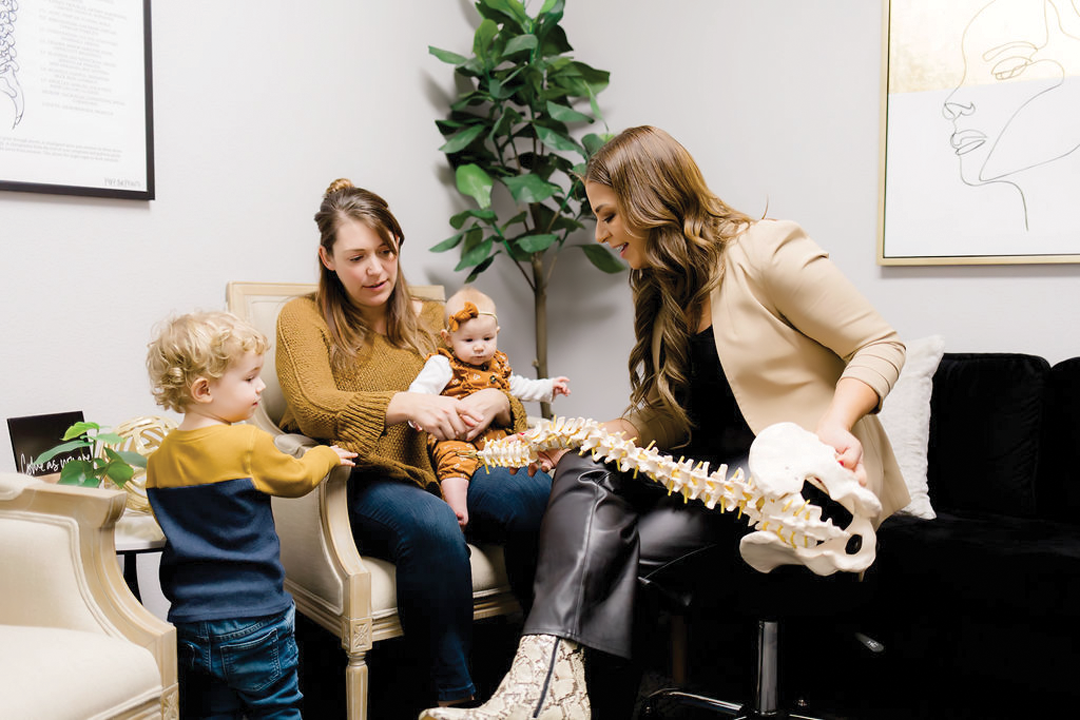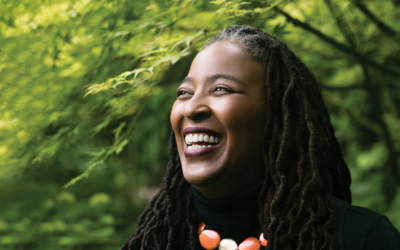When life gets busy, it’s easy to neglect your health until something goes awry. Yet there are many preventative and complementary health approaches that can help you function at your best. Three main examples are massage therapy, chiropractic and acupuncture, all of which are effective at treating a wide range of health issues when used independently and together. Here, local experts share their experience with each modality and the health concerns they commonly see.
Massage therapy
Nearly everyone can benefit from massage, says Tricia Newman, owner of Healing Hive Massage and Energy Work in Loveland. She helps people with many different symptoms, from neck and back pain to specific injuries, migraines and general tension. However, there is one underlying affliction most of her clients share: stress.
“We are always tight in the shoulders, and everybody has headaches and digestive issues. So many of these issues are linked to chronic stress,” she says. “If we can just have an hour, even if it’s once a month, where we’re not responsible for everybody else’s well-being, it’s amazing the healing that can happen.”
An hour-long massage can have similar benefits to eight hours of sleep, Newman says, providing deep rest and care for overtaxed muscles. It’s also an opportunity to get other forms of rest, like social rest, emotional rest and digital rest, she says.
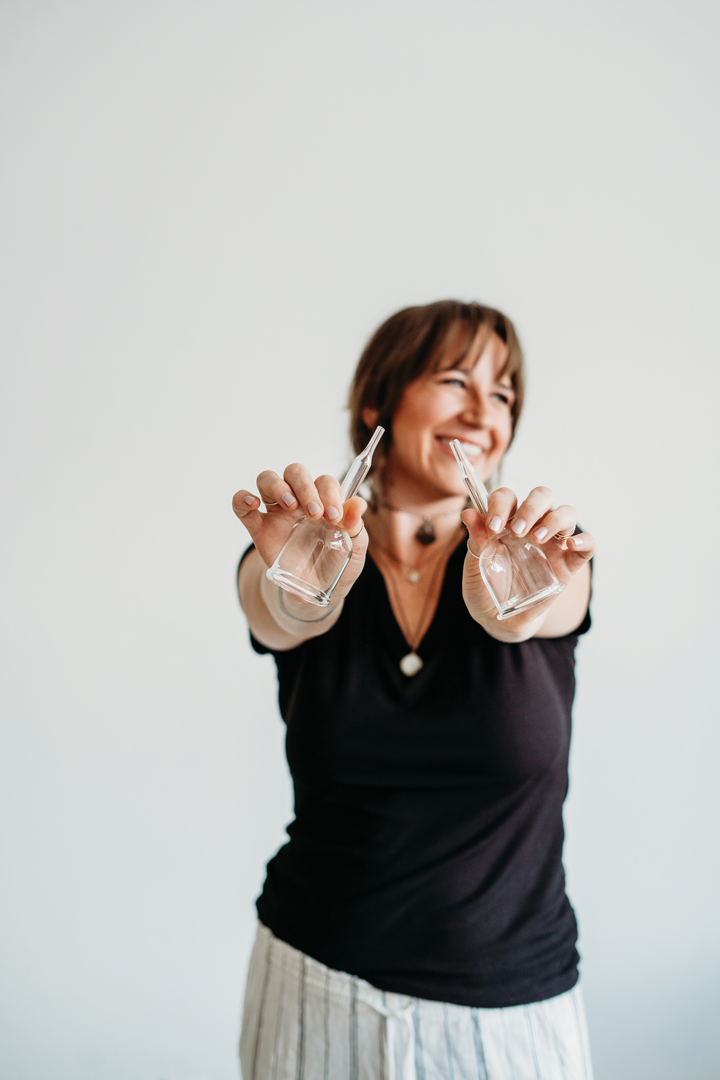
Tricia Newman, owner of Healing Hive Massage
and Energy Work. Photo by Wild Bliss Photography.
Since massage is relaxing, many consider it an indulgence rather than an important part of self-care, says Jenifer Fogarty, a licensed massage therapist who works out of Thrive CommUnity Acupuncture & Massage in Fort Collins with her practice, Juniper’s Strength, LLC. It’s one of the best ways she takes care of herself, and she encourages others to do the same.
“Why wait until you’re in crippling pain?” she says. “The body can get stuck in patterns, and massage is a great tool to unwind the tissue after it’s gotten all wound up, either through trauma, accidents or repetitive use.”
Neck and back pain are two common complaints, Newman says, especially among people who sit at a desk all day. Slouching in a chair sacrifices the integrity of the muscles in the neck, back and pecs, she says, putting extra pressure on the muscles that overextend to compensate.
Massage can help to loosen these tight tissues as well as target specific areas that are overworked through repetitive movement. Both Newman and Fogarty see clients with carpal tunnel, tennis elbow, sciatica and rotator cuff injuries, to name a few.
“I have a lot of clients with injuries they’re working through, but I also work in Estes Park and see a lot of tourists,” Fogarty says. “I love it when someone comes in and says, ‘My feet are killing me because I hiked a lot today.’”
Massage therapists use many different techniques and tools, including cups and hot stones that target tense areas and “knots” on a deeper level. Whereas static cupping is focused on trigger points (often leaving circular marks on the skin), Newman prefers a lower vacuum setting with vibration and moves the cups to facilitate lymphatic flow. She also uses the traditional black basalt stones as well as pink Himalayan salt stones.
“The salt stones have a little bit of texture, so they’re exfoliating and leave behind some of the minerals so that you have long-lasting effects,” she says.
Newman says massage is most effective when clients can fully relax and let her work.
“If I can get you to fall asleep or think about falling asleep, your body isn’t going to guard against me,” she says. “You can feel safe enough for me to get into the deeper levels of tissues that I need to access to get that release to happen and reestablish balance.”
Chiropractic
When there is a misalignment in the spine, massage can only provide so much relief. That’s why Newman recommends chiropractic adjustments in addition to massage for clients dealing with chronic pain, such as in the lower back. She and Fogarty agree that tight muscles can also pull a chiropractic adjustment back out, so in many cases, incorporating both modalities yields the best results.
Whereas massage therapy works on the soft tissues, chiropractic targets structural issues and reduces stress on the nervous system, which runs along the spine. There are hundreds of different chiropractic techniques, from manual adjustments to instrument-based techniques, and they all aim to bring the spine and its contents back into proper alignment.
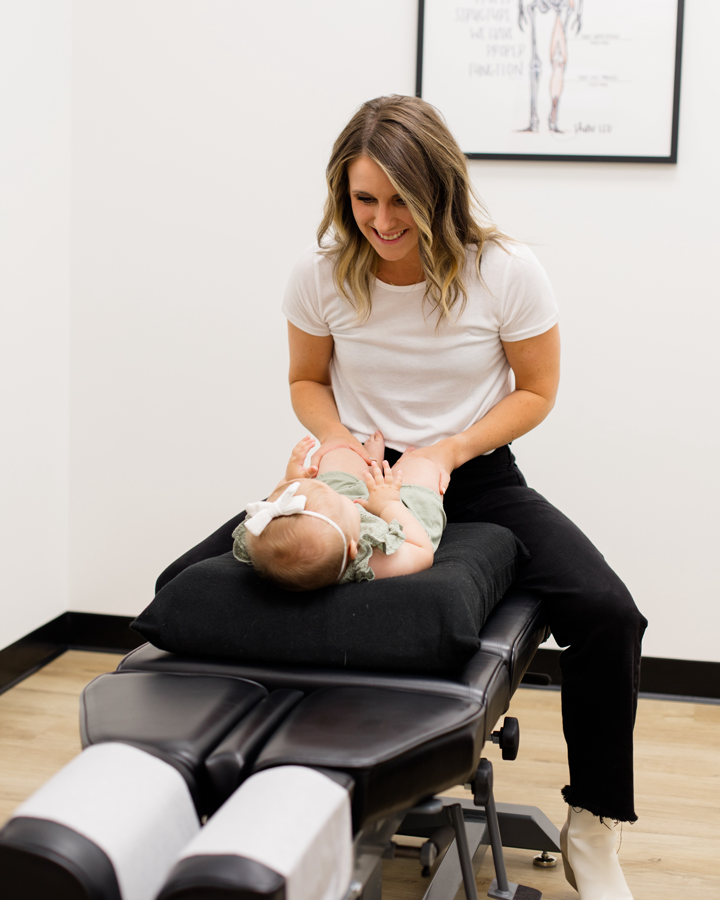
Impact Chiropractic. Photo by Rachel Cox, Lumen Creative.
“We don’t treat any symptoms; we help remove the body’s interference and allow the body to function exactly how it’s designed to,” says Dr. Heather Parks, associate chiropractor at Impact Chiropractic in Fort Collins. “When we remove stress from the body, those symptoms tend to go away.”
Parks sees many adult patients with neck and back pain, and after a series of adjustments, they not only experience less pain but see additional benefits, like a healthier immune system, more energy and higher libido. Chiropractic can also help adults who are struggling with menstrual pain and irregularity, fertility issues, headaches and migraines, digestive problems, anxiety and depression—“Really about anything,” she says. The key is getting adjusted regularly.
“I’m never saying, ‘Let’s get your yearly adjustment.’ It might feel good, but it’s not getting the nervous system to be in a stress-free state for the long term,” Parks says. “You may have relief after one or two adjustments, but usually the problem is going to be more deeply rooted than that. It took years to get to that point, and it takes time to get back to where you need to be.”
Many parents bring in their children and infants for adjustments as well. For kids, Parks says chiropractic may help with ear infections, bed wetting and ADHD, and adjustments are often made preventatively. The infants she sees tend to have colic, constipation, latching issues or traumatic birth injuries and are fussy or “archy” (arching their back or stiffening their legs) because the stress on their nervous system is causing them discomfort.
“Infant adjustments are very different than adult adjustments,” she says, noting that all it takes to adjust a baby’s atlas vertebrae is the subtle pressure you could comfortably apply to your eyelid. “More often than not, it’s like, ‘You had a semi-stressful birth. Let’s make sure we’ve cleared your nervous system so that symptoms don’t develop later.’”
Pregnant women can also benefit from chiropractic adjustments since keeping the spine and pelvis properly aligned reduces back and hip pain while the fetus grows. Parks warns that any pediatric or prenatal adjustments should be made by a chiropractor who is Certified by the Academy Council of Chiropractic Pediatrics (commonly called a CACCP) as they have undergone 200 extra course hours to be able to safely adjust pregnant women and children.
Regardless of their doctorate-level training, chiropractors sometimes have a stigma of being unsafe, Parks says. To eliminate any fear, she suggests finding a chiropractor who will spend time going over your complete health history, take X-rays, perform a neurological exam and communicate in full detail what’s going on in your body before you get adjusted.
“My goal is always to make sure someone feels completely comfortable going into their first adjustment, and if they’re not, then I have plenty of ranges that I can offer,” Parks says. “No technique is better than the other; we just want the right technique for that person.”
Acupuncture
Of these three modalities, acupuncture is usually the hardest for people to wrap their head around. That’s because it’s an ancient medicine that originated in China roughly 2,500 years ago with the idea that tiny needles inserted into specific “meridian” points along the body can move Qi (pronounced “chi”), or energy, to improve health issues and overall well-being. It’s also less obvious what’s happening when compared to massage or chiropractic.
But it’s incredibly powerful, according to Newman, Fogarty and Parks, who have all had personal breakthroughs with acupuncture. Newman recommends it for anyone experiencing any kind of stagnation—she had a major detox with a liver point—and Parks was able to regulate her menstrual cycle using acupuncture and chiropractic together. Parks also recommends acupuncture for many of her patients who are dealing with fertility issues or are undergoing in vitro fertilization.
“Anyone who needs to bring more blood flow to the uterus or spread energy from different areas throughout the body [can benefit],” she says.
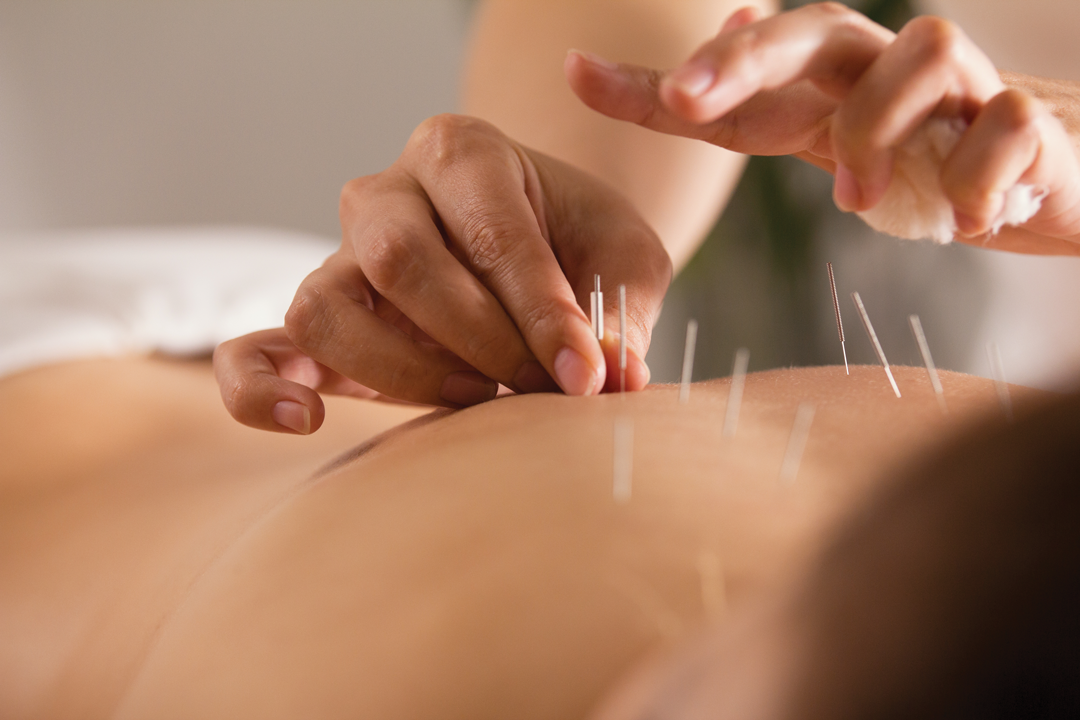
Fogarty, a former teacher, struggled with anxiety and insomnia until she started seeing Dee Gorski, a licensed acupuncturist at Thrive CommUnity Acupuncture & Massage, many years ago. Fogarty would be up in the middle of the night, thinking about lesson plans or students, and acupuncture helped her manage those issues, she says.
Gorski (they/them) decided to study acupuncture after trying “acudetox” while earning a bachelor’s degree in traditional Eastern arts at Naropa University in Boulder. Acudetox involves placing five needles in certain points on the ear and was originally developed for addiction recovery. It’s also great for stress, anxiety, depression and PTSD symptoms, says Gorski, whose first experience with acudetox was life-changing.
“It was the first time I’d ever felt something really break my chronic clinical depression,” Gorski says. “Afterward, I sat under a tree on the lawn and had the realization that hope and beauty were real things, which let me know just how bad my depression had been.”
When Gorski was in acupuncture school, they realized that many other students ended up there for similar reasons.
“In school, we were given a heads up: ‘For so many of the people who come to see you, you are their last chance because you’re a weirdo who sticks needles in people. Then they will love you because you’re going to be the only person who helped them,’” Gorski says.
While Gorski loves massage and chiropractic, they recommend acupuncture for a wide range of issues, from back pain, whiplash and other musculoskeletal problems to indigestion, hormone imbalance and grief. Often people have specific complaints, and other times, they feel off but aren’t quite sure what’s going on. Acupuncture is great for issues that are hard to pinpoint, Gorski says.
Gorski starts each session with a pulse and tongue diagnosis (part of the Traditional Chinese Medicine practice) to assess organs and other body systems that need support. Put simply, they then insert tiny filiform (solid) needles into the meridian points that correspond to those areas. The insertion feels like a slight tap of a thumb tack, Gorski says, which shouldn’t really hurt because the needles are 0.2 millimeters in circumference, 20 of which can fit inside the fluid space of the 18-gauge injection needles used at the doctor’s office. The needles are left in for 25-30 minutes.
“You try to relax as much as you possibly can, and hopefully you’ll get an acupuncture nap,” Gorski says. “I have a few people who say this is their favorite nap and others who like to scroll Instagram. Most people will get to the trance-like place where time seems to fall away; it’s like a shortcut to mindfulness meditation.”
Many feel what Gorski calls “acu-stoned,” or lightheaded, for about 10 minutes after their first couple of sessions. Gorski attributes this to the anti-inflammatory effects of acupuncture; even after the “acuhigh” wears off, a sense of calm and balance can be felt for days.
“Acupuncture is so anti-inflammatory and relaxing that we don’t recognize the degree to which we need that inflammatory response and stress to keep us moving. We’re stuck in that grind, so when something breaks your hustle like that, it’s like, ‘whoa,’” Gorski says. “Take it easy as much as possible for the rest of the day after getting your treatment. If you go get on a party bus, your acupuncture is over.”


